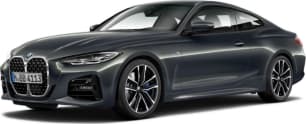The new AMG CLE 53 might look much like several of its AMG 63 predecessors, with its brutish stance and bulging bits, but does the German performance coupe drive and feel like an AMG flagship?
With a 63 range-topper (as yet unconfirmed) in the pipeline, that’s a bit of a moot point here, because that will be an altogether harder, faster and more expensive proposition.
But we can tell you that, even without the bellowing V8 of old, the 53 does a damn-fine impression of a charming high-performance GT with the straight-six .
At the heart of the matter is the inline six-cylinder turbo-petrol engine incorporating an electric compressor working the lower revs for punchy off-the-line acceleration and a big twin-scroll gas turbo for more-instantaneous responses further up the rev range.
This makes for an impressively rapid real-world tearaway. Not brutally fast in the way even middling EVs can manage to be nowadays, but still with an urge and character that puts you in the mood for speed.
The steering, meanwhile, is alert, faithful and remarkably reactive, with that 4WS rear end tucking in neatly through the tight turns and twisty bits, allowing a feverish pace with a pleasing grace to be maintained.
Assisting that immersive agility is an almost unshakable sense of grip – no surprise given the variable-torque AWD as well as the late-summer warmth and dryness of the roads we were testing on.
Yet, even beyond these factors, it’s clear the AMG’s immense roadholding provides a reassuring layer of confidence and control.
No opportunity was provided to unleash the CLE 53’s full fury on a track, so we can’t tell you how easily sideways or catchable this thing steers in Race mode with all the safeties turned off, but this coupe’s dynamic bandwidth was obvious during the all-too-few occasions we did manage to fang it.
Another positive is the suspension’s ability to soak up the bumps without too much disturbance inside, allowing for easy and effortless cross-country touring. No truly terrible roads were encountered during our half-day in this civilised beast, though, so we’ll have to reserve our judgement on whether this is the comfortable all-rounder that Mercedes claims it is.
What we can tell you is that there is too much road-noise intrusion inside an otherwise isolated cabin. And we’re no fans of the lack of a spare wheel – an absolute necessity in Australia.
Still, first impressions are very positive.
Its maker calls the CLE 53 the AMG for all occasions, and we cannot argue with this logic.
That there’s a decent wad of thrills and emotion on offer to counterbalance this car’s comparative refinement and civility just proves there is a place for the penultimate version of this series.

